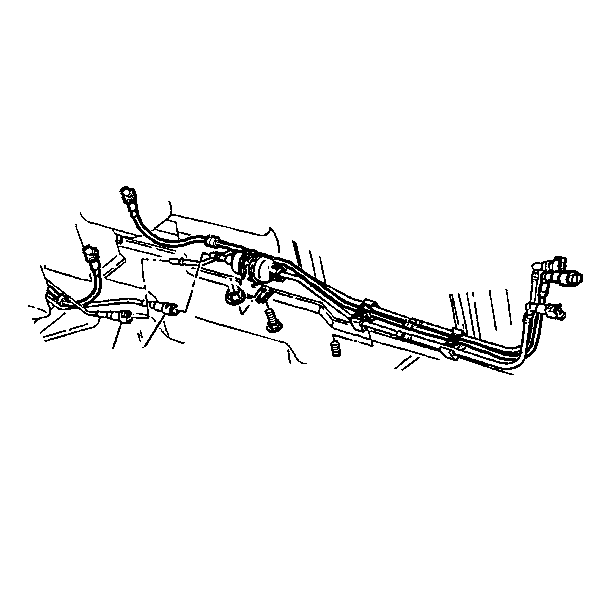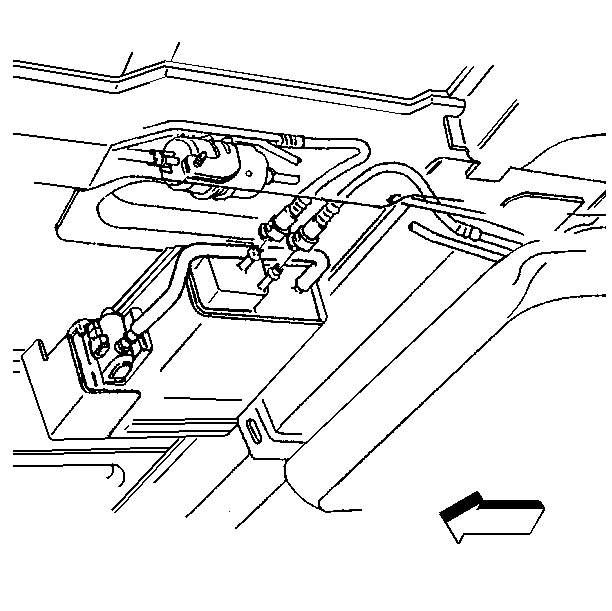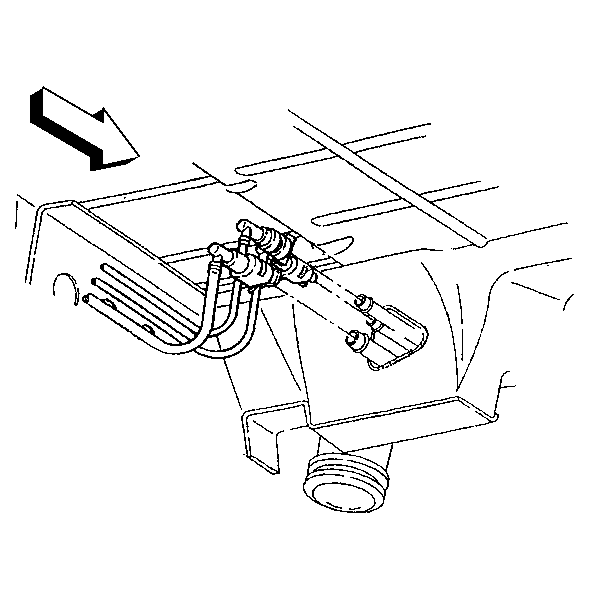Removal Procedure
- Remove the hardware retaining the chassis EVAP pipes. Note the location of the attaching hardware for installation.
- disconnect the chassis EVAP pipe quick connector at the EVAP canister.
- Disconnect the chassis EVAP pipe quick connector at the front frame rail.
- Remove the chassis EVAP pipe.

Notice: Do Not attempt to repair the EVAP pipes or the connecting hoses. Replace the damaged EVAP pipes or the connecting hoses are damaged. If the nylon EVAP pipe becomes kinked and cannot be straightened, it must be replaced.
Notice: Replace the EVAP pipes and hoses with the original equipment or parts that meet the GM specifications for those parts. The replacement EVAP pipe must have the same type of fittings as the original pipe in order to ensure the integrity of the connection. When replacing EVAP hoses, use only reinforced fuel-resistant hose identified with the word Fluoroelastomer or GM 6163-M on the hose. The inside hose diameter must match the outside pipe diameter. Do not use rubber hose within 100 mm (4 in) of any part of the exhaust system or within 254 mm (10 in) of the catalytic converter.



Installation Procedure
- Install the chassis EVAP pipe.
- Connect the chassis EVAP pipe quick connector at the front frame rail.
- Connect the chassis EVAP pipe quick connector at the EVAP canister.
- Reinstall the hardware retaining the chassis EVAP pipe.

Important: Route the replacement EVAP pipes in the same manner as the original EVAP pipes were routed.


Notice: Use the correct fastener in the correct location. Replacement fasteners must be the correct part number for that application. Fasteners requiring replacement or fasteners requiring the use of thread locking compound or sealant are identified in the service procedure. Do not use paints, lubricants, or corrosion inhibitors on fasteners or fastener joint surfaces unless specified. These coatings affect fastener torque and joint clamping force and may damage the fastener. Use the correct tightening sequence and specifications when installing fasteners in order to avoid damage to parts and systems.
